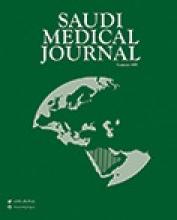Abstract
OBJECTIVES: To evaluate the effect of the mode of delivery on the course of pulmonary artery pressure (PAP) in neonates.
METHODS: Eighty healthy and term neonates delivered in the maternity wards of Dunya Maternity Hospital, Camlica Maternity Center, and Sultan Maternity Hospital in Diyarbakir, Turkey from June to August 2009 were included in the study. Tricuspid regurgitation (TR) was determined using color Doppler echocardiography, and the measurements were carried out with continuous wave technique on the first, third, and the fifth days of birth. The babies who had no TR flow on the first, third, or the fifth day were excluded, and the study was completed with 42 cases. Twenty-two of them were delivered by cesarean section (CS), and 20 by vaginal delivery. The peak flow velocity of TR was used in the calculation of the right ventricular pressure, which reflects PAP.
RESULTS: In both groups, PAP continued to decline on the third and fifth days. However, in the vaginal delivery group, the decrease between the third and fifth days was statistically insignificant, whereas a statistically significant decline (p=0.01) in the CS group lasted until the fifth day.
CONCLUSIONS: Although the birth method does not create a clinical morbidity on the circulatory system as seen in the respiratory system, it can be stated that the circulatory adaptation of vaginally delivered babies is completed earlier.
- Copyright: © Saudi Medical Journal
This is an open-access article distributed under the terms of the Creative Commons Attribution-Noncommercial-Share Alike 3.0 Unported, which permits unrestricted use, distribution, and reproduction in any medium, provided the original work is properly cited.






